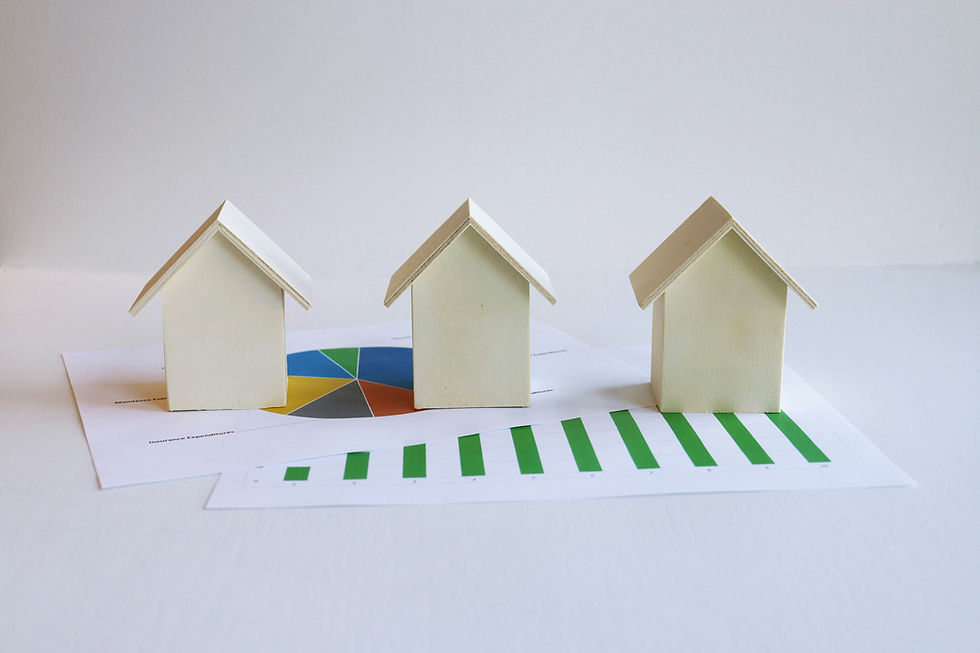Property Taxes Explained for Second Homes in India
- Social @ Avacasa
- 7 days ago
- 3 min read

Property taxes in India can feel like a maze or even a Rubik's cube — different rates, rules, and terms across every state and city. Every time you buy property in a new location, you end up relearning how the system works. For investors or second-home owners, that’s energy-draining and time-consuming.
If you’re planning to own a second home — whether in your city or another state — this guide simplifies everything you need to know about property taxes, income tax, and capital gains tax on second homes in India.
What Is Property Tax?
Property Tax is the amount you pay to local governing bodies (like municipal corporations or panchayats) for owning land or real estate, be it residential, commercial, or retail.
Just as tenants pay rent, property owners pay annual property taxes. This money funds civic services like roads, water, and waste management.
It’s typically calculated based on the value of your property, which depends on:
● Location
● Size and type of property
● Usage (residential or commercial)
● State/city valuation rules
Types of Properties / Second Homes in India
Here’s a simple breakdown of the main property types that attract taxes in India:
1. Let-Out Property (Rented Property) – You earn rent, and it’s taxable as
“Income from House Property.”
Deductions: 30% standard maintenance + unlimited home loan interest
deduction.
2. Deemed Let-Out Property (Second Home) – You own but don’t rent it; the
government assumes “notional rent.”
Deductions: Same as above.
3. Commercial Property – Offices, shops, co-working spaces, etc.
You pay GST, property tax, and can claim depreciation if used for business.
4. Vacation / Holiday Home – Used for holidays or short-term rentals.
Taxed based on whether it’s rented or self-used.
5. Farmland – Exempt if used agriculturally; taxable if sold near urban areas.
6. Under-Construction Property – Tax benefits start only after completion.
7. Inherited or Gifted Property – No tax on receiving, but rent or sale later is
taxable.
1. Property Tax (Municipal Tax)
Formula:
Property Tax = Base Value × Tax Rate × Usage Factor × Location Factor
Example: If your property’s annual value is ₹8,00,000 and your city’s tax rate is 0.2%, [ ₹8,00,000 × 0.002 = ₹1,600 \text{ per year} ]
How to pay: Via your city’s municipal website (e.g., BBMP, MCGM, GHMC). Payments are annual or half-yearly.
How to reduce or avoid:
● Pay early (5–10% discount in most cities).
● Add solar panels or rainwater harvesting — some cities offer eco-rebates.
● Keep it vacant (some states offer lower rates for unused homes)--not a good
option.
2. Income Tax on Rental Income
What it is: If your second home earns rent, that income is taxable. Even if not rented, the government assumes potential rent (“deemed rent”).
Formula:
Taxable Income = (Annual Rent - 30% Standard Deduction -Home Loan Interest)
Example: If rent = ₹6,00,000 per year and loan interest = ₹1,00,000 [ ₹6,00,000 - (₹6,00,000×0.3) - ₹1,00,000 = ₹3,10,000 ] This ₹3,10,000 is taxed as per your income slab.
How to reduce or avoid:
● Claim 30% flat maintenance deduction (no receipts needed).
● Deduct up to ₹2 lakh loan interest annually.
● Co-own with a spouse to split income and tax liability.
● Declare only one house as “self-occupied” to avoid deemed rent.
3. Capital Gains Tax (on Sale)
What it is: When you sell your second home for more than you paid, the profit is capital gain, taxable under two categories:
● Short-Term (STCG): Sold within 2 years → taxed as per your income slab.
● Long-Term (LTCG): Held 2+ years → taxed at 20% after indexation (inflation
adjustment).
Formula: Capital Gain= (Sale Price) - (Purchase Price)×( CIIsale /CIIpurchase) ]
Example: Bought at ₹50 lakh in 2016 (CII=254), sold at ₹80 lakh in 2025 (CII=348): [ ₹80,00,000 - (₹50,00,000 × 348/254) = ₹11,38,000 ]T ax = 20% of ₹11,38,000 = ₹2,27,600
How to reduce or avoid:
● Reinvest in another property within 2 years (Section 54).
● Invest up to ₹50 lakh in 54EC bonds (NHAI or REC) within 6 months.
● Use indexation to lower your taxable gains.
Conclusion
Owning a second home in India can be rewarding for lifestyle, income, and long-term wealth — but understanding taxes is key to keeping those rewards intact.
Whether it’s property tax, rental income, or capital gains, a little planning can save you lakhs.
So, before your next property investment, bookmark this guide and share it with a friend who’s planning to buy a vacation home.
Tell us below: Which type of second home are you planning to invest in next — a vacation villa, farm plot, or city flat?





Comments